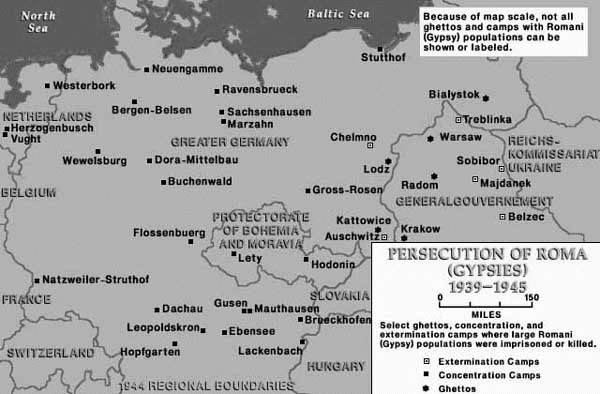 AD
AD
Today is: December 30
Scroll to explore events active on this date.
LEEP INK FEATURES

August? Absolutely!
In August, we live through the Dog Days of Summer. It's hot and often humid, and those who can leave for better climates do. Down south, winter is in full force. August is also known as "the ...

In The Heat of July: July 2025 Events
Is it hot enough (or cold enough if you're below the equator) for you yet? There is actually a day for that! Like every month, I pick a diverse collection of events you may or may not know about. This ...

May Blooms: Events in May 2025
Along with October, May is one of the most densely packed months of the year. It's before the summer humidity and the last whole month of the school year. The weather is warming in t...
About International Romani Resistance Day
Politics , Military
Ends: May 16, 2023
DESCRIPTION:
It was on this day, May 16, 1944, that the Romani people of the Auschwitz-Birkenau concentration camp, starving and gaunt, rose against their Nazi captors and resisted, refusing to go to the gas chambers without a fight.
Most people are aware of the Nazi Holocaust and what happened to millions in Europe because of it. The coverage of the Jewish victims, who constituted half of those killed and persecuted, has been well documented.
But who was the other half?
The Nazis targeted groups they deemed unfit to their social ideals, including over 75,000 mentally ill and disabled, people of color, 2.5 million Catholics and Poles, homosexuals, and the Romani.
The Romani are sometimes referred to as Gypsies, Travelers, or Roma. Like the Jewish population of Europe, the Romani lost 550,000 people, 25 percent of their total population. And yet, they are rarely mentioned. The Roma wore black triangles on their sleeves instead of yellow stars. Romani were rounded up, starved, and executed, often digging their graves. With the fall of the Soviet Union in 1991, more has been revealed about the Romani holocaust experience. Researchers believe the number of Romani killed may exceed three times what they initially thought.
August 2 is International Roma Holocaust Remembrance Day. This day draws particular attention to the Roma survivors struggling with persecution and prejudice in many parts of Europe and America.
VIDEOS
Where would you like to go now?
 AD
AD




/footer-logo.svg)
